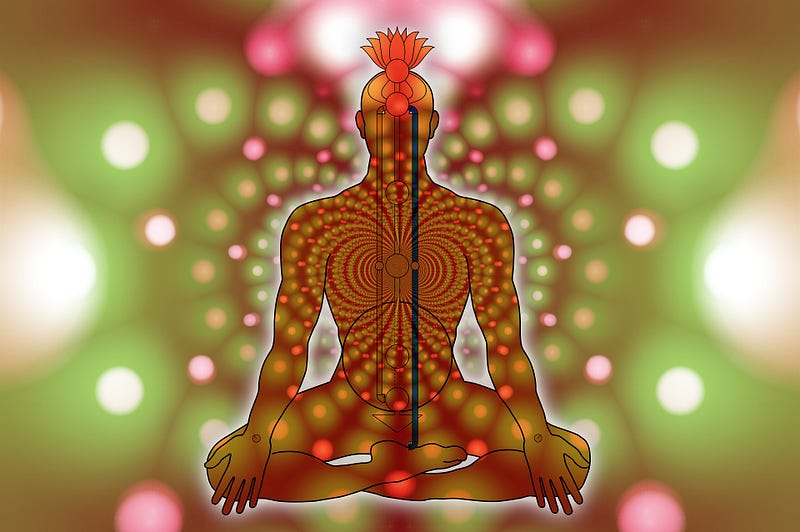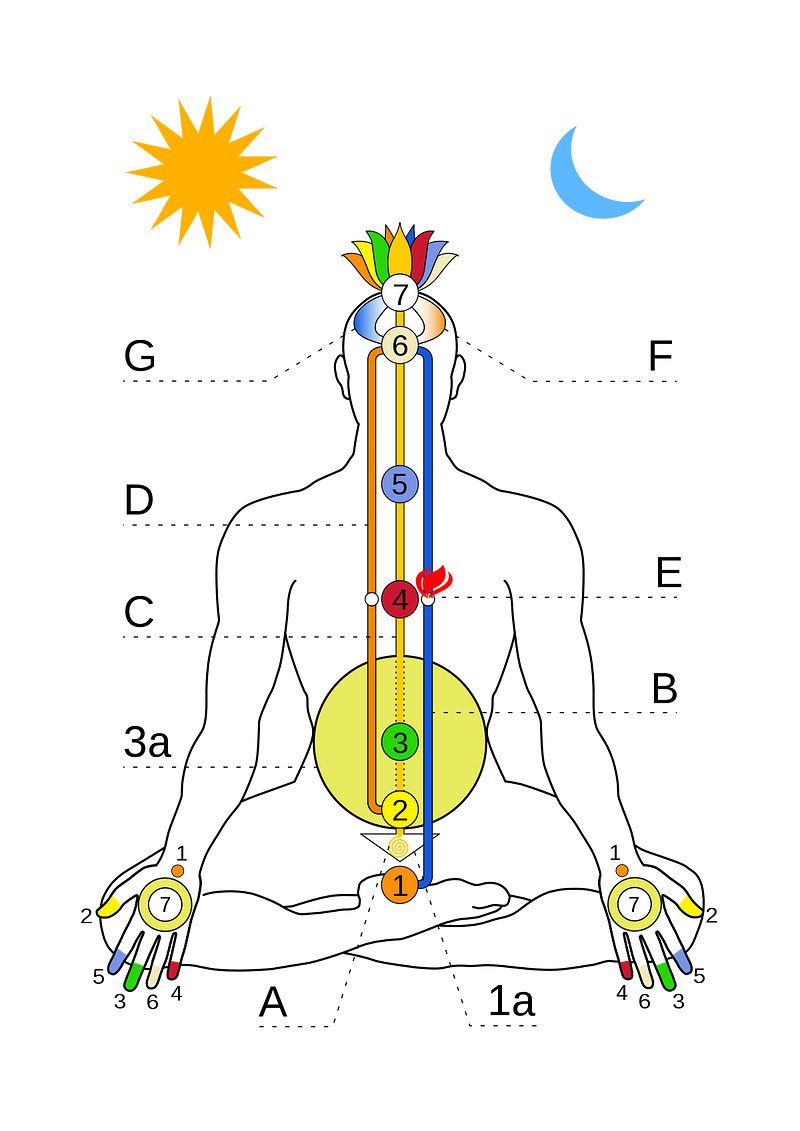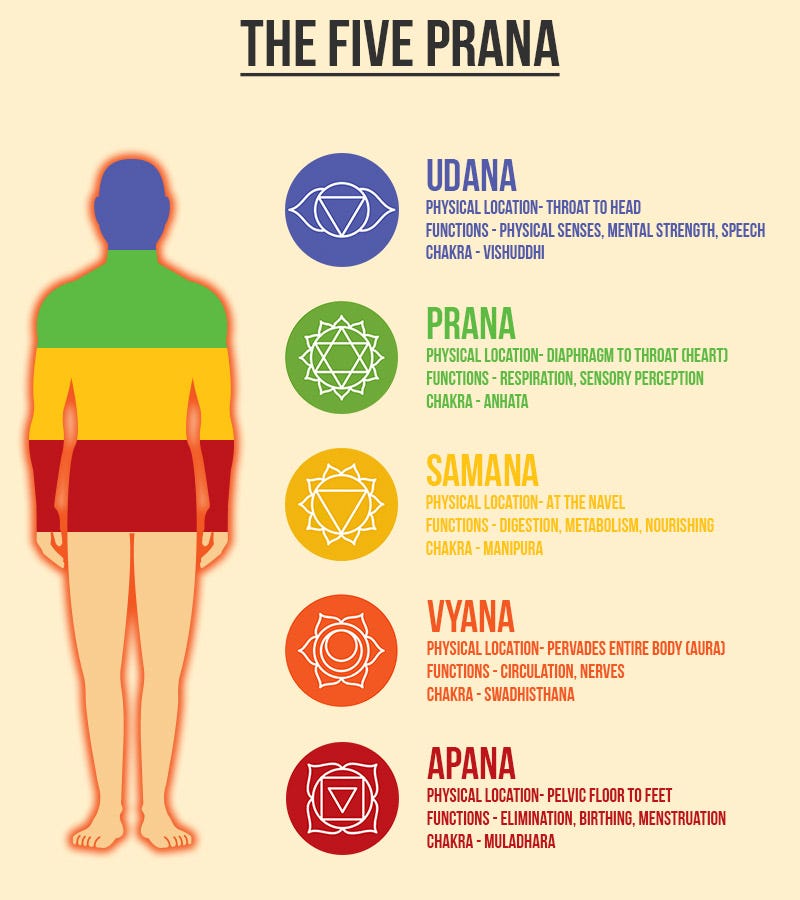The Beginner’s Guide to Your ‘Life Force’ and How It Empowers You

Image by Gerd Altmann from Pixabay
An intro to ‘prana’ and its wonderful manifestations
Your whole life depends not upon food, air, or water. It depends, first and foremost on prana. It has different names in different philosophies like “qi” or simply “life-force.”
You can’t see it, touch it, or taste it. But you can feel it flowing through your body. Many meditators and yogis feel this prana flowing up and down the spine during meditation.
Although it seems mystical and even untrue, it’s the essence of all that is. According to an old Vedic story, the five main faculties — the mind, the prana, speech, hearing, and sight were arguing about which one’s the most important.
To test their importance, they decided to leave the body and find out whose absence was most missed. When the speech left, the body was mute, but still well. When the eyes left, the body flourished, even though blind. When the power of hearing left, the body was deaf, yet still fine. When the mind left, the body was unconscious, but it still had life.
But when the prana left, the body started decaying. Thus, the other faculties realized the clear winner and begged prana to come back to the body.
The moral of the story is simple — since prana is the all-pervading force responsible for our existence, we must be aware of it and learn to use it for our growth.
Prana, as we saw above, simply means “life force energy.” It’s also called “vital energy,” “breath of life,” or “spirit energy.” Prana is not only flowing inside us but all around us.
It not only bring our bodies to life but it’s also the creative power that brings nature into existence.
Pranayama (‘prana’ + ‘yama’=’control of prana’) is usually associated with breathing exercises. However, prana is more than the breath. But they’re closely related since controlling the breath helps us control the flow of prana in the body as well.
The Flow of Prana
We live not only through the energy we get from food but also from air, sunlight, and other energies in the ether that we can absorb if we’re in tune with them.
This prana flows to every cell in the body through the nadis — subtle nerve channels. The three main channels or nadis are the ida, pingala, and sushumna.
All of them start at the base of the spine and spiral upwards to connect to the opposite nostrils. The sushumna goes up till the crown of the head. Wherever the ida and the pingala intersect, the chakras are located.
In most people, prana doesn’t flow all the way through the sushumna to the crown because above every chakra our energies are blocked. To withdraw these energies and open the gates for the kundalini to rise, takes the practice of yoga and other spiritual sciences.

A simplified view showing the three major nadis or channels, the Ida (B), Sushumna [C], and Pingala (D), which run vertically in the body. (Source)
Manifestations of Prana
Human beings consist of Koshas or sheaths that encase the soul like layers of an onion. The spiritual process is about getting rid of these sheaths to realize the true nature of our souls.
One of those Koshas is called “Pranayama Kosha,” meaning the “sheath made of breath.” This kosha refers to the vital body that is composed of five aspects of prana called vayus or “forces of air”. These five aspects are as follows:
Prana Vayu
Prana Vayu or the “forward-moving air” moves inward and draws energy into the body. It governed the thoracic area between the larynx and the top of the diaphragm.
Apana Vayu
Apana Vayu or the “air that moves away” governs the abdomen, below the navel region and also provides the energy to the organs there — intestines, kidneys, genitals. It’s the force that expels breath and is concerned with waste excretion.
Udana Vayu
Udana Vayu or “upward-moving air” governs the neck and head, activating the ears, eyes, tongue, nose, etc. Owing to the area it governs, it’s responsible for spec, effort, enthusiasm, willpower, ability to stand, etc.
Samana Vayu
Samana Vayu or “balancing air” governs the area between the heart and the navel. It’s responsible for transformation — physically, by digesting food and spiritually by expanding awareness and raising the kundalini.
Vyana Vayu
Finally, Vyana Vayu, or “outward-moving air” governs the whole body, moving from the center in all directions, and acting as the reserve force for other pranas.
Below is the diagram of the regions of the five kinds of prana:

That was a lot of information. But know this — the key to having a healthy existence is to keep our pranas working in harmony. So let’s understand how they relate to our physical, mental, and spiritual world.
Prana and The Physical World
Prana is the force that holds our bodies together and makes it more than a mish-mash of flesh and bones. It creates the subtle nerve channels that help the energies flow through our bodies and brains.
Prana Vayu is responsible for creating the openings and channels in the head, brain, and heart. These include two eyes, two ears, two nostrils, and one mouth. Udana Vayu helps to create openings in the upper part like the mouth and the vocal organs.
Apana Vayu then creates openings in the lower body like reproductive organs and excretory systems. Samana Vayu does the same for the middle part. It opens up channels of the intestines and other neighboring organs.
Vyana Vayu finally shapes the channels on the periphery of the body like arms and legs along with muscles, joints, bones, etc.
The main and basic form of pranic activity in the body is breathing. Prana, Samana, and Vyana govern the inhalation, absorption of oxygen, and circulation respectively.
Prana and The Mental World
Just like we saw in the example of breathing, in the mental world the prana looks over the intake of sensory experience, Samana digests them and Vyana circulates them. These sensory impressions along with food and breath give rise to mental energy.
Apana takes care of removing negative emotions and Udana provides positive energy and motivation. If Apana doesn’t work properly, it leads to depression, stress, anxiety, fear, and basically every negative emotion we want to avoid. When Udana is deranged it causes attachment, greed, possessiveness, and ego-centricity.
The more prana we have the more we’re receptive to positive sources of mental energy, and feeling. In its paucity, we’re out of balance and misguided.
Prana and The Spiritual World
While there are many aspects of prana that help us understand the physical and mental world, its prime importance shines in the spiritual sphere. Talking about spiritual realities, Samana, which governs the heart center, gives us peace and balance. The heart is where our true Self dwells and from where we develop virtues of love.
Vyana governs the movement of life force through the nadis — ida, pingala, and sushumna. It keeps them open and clear. Apana prevents negative astral and energetic influences while Prana Vayu gives us the energy for spiritual growth.
Udana takes care of our growth and consciousness. It also carries our minds into deep sleep and after-death states of consciousness.
Many benefits on the spiritual path can be associated with these different forms of prana. For instance, when we feel great peace, it’s due to the suitable Samana Vayu. Or when we hear stories of saints levitating and experiencing extreme lightness, they tap into the subtle Udana.
Working with Prana
With all that knowledge, it’s natural to ask — “What can I do to increase the flow of prana?” That indeed is the right question. The more our prana flows upward through the spine, the higher the quality of our life will be — mentally, emotionally, physically, and spiritually.
The air we breathe and the food we eat has a lot to do with our prana. Certain kinds of foods give more energy than others. Also, breathing fresh air gives more energy to the body and the mind. Even certain mental attitudes like love, truthfulness, kindness lead to higher pranic energy.
But the main way to work with prana is to control it directly — through pranayama. These techniques are yogic breathing practices that use the primordial link between the breath and the prana to make it flow correctly.
One popular breathing technique to balance the flow of prana in the ida and the Pingala is “Nadi Shodanam” or Alternate-Nostril breathing.
Another very important method referred to by Krishna in the Bhagavad Gita is to unite the prana and the Apana. Prana flows up and the Apana flows down. Thus this up and down motion of the energy keeps us involved in the world and therefore keeps our energy occupied.
Through various practices like Kriya Yoga, one can neutralize the currents of prana and Apana. When the currents are neutralized, the breath becomes still and unnecessary. This is the state of breathlessness where the body is sustained by cosmic energy and no energy is being expelled to control the senses.
Final Thoughts
There’s a lot to know about prana that I couldn’t possibly have covered in a single post. But I hope you have a good idea of what prana is and how you can start working with it.
From your moods, and attitudes to subtle spiritual truths of chakras and kundalini, prana plays a crucial role — and how could it not? It’s what creates and sustains you.
We’re all under the control of prana. So we must learn to be aware of it ad seek to increase its flow in our lives for greater wellbeing and harmony.